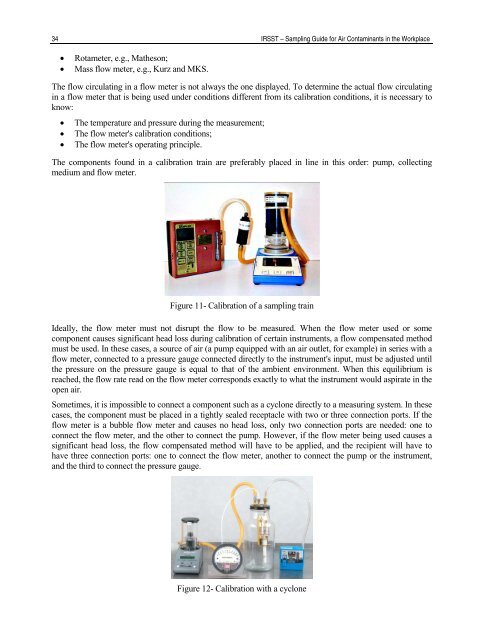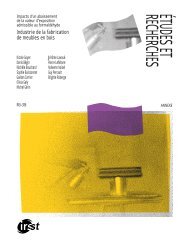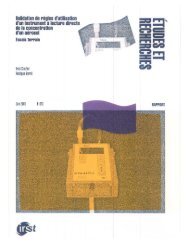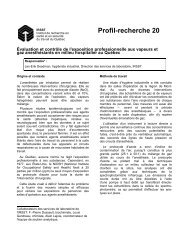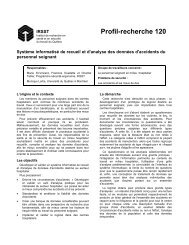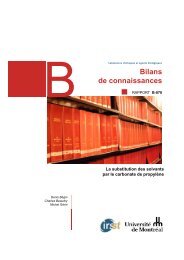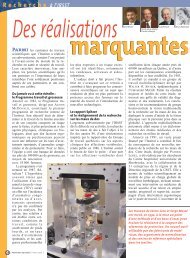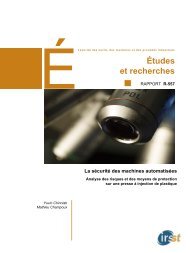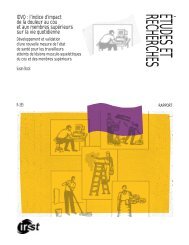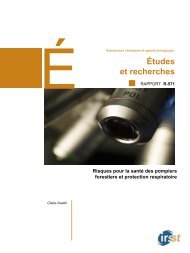Sampling Guide for Air Contaminants in the Workplace - Irsst
Sampling Guide for Air Contaminants in the Workplace - Irsst
Sampling Guide for Air Contaminants in the Workplace - Irsst
Create successful ePaper yourself
Turn your PDF publications into a flip-book with our unique Google optimized e-Paper software.
34 IRSST – <strong>Sampl<strong>in</strong>g</strong> <strong>Guide</strong> <strong>for</strong> <strong>Air</strong> <strong>Contam<strong>in</strong>ants</strong> <strong>in</strong> <strong>the</strong> <strong>Workplace</strong><br />
• Rotameter, e.g., Ma<strong>the</strong>son;<br />
• Mass flow meter, e.g., Kurz and MKS.<br />
The flow circulat<strong>in</strong>g <strong>in</strong> a flow meter is not always <strong>the</strong> one displayed. To determ<strong>in</strong>e <strong>the</strong> actual flow circulat<strong>in</strong>g<br />
<strong>in</strong> a flow meter that is be<strong>in</strong>g used under conditions different from its calibration conditions, it is necessary to<br />
know:<br />
• The temperature and pressure dur<strong>in</strong>g <strong>the</strong> measurement;<br />
• The flow meter's calibration conditions;<br />
• The flow meter's operat<strong>in</strong>g pr<strong>in</strong>ciple.<br />
The components found <strong>in</strong> a calibration tra<strong>in</strong> are preferably placed <strong>in</strong> l<strong>in</strong>e <strong>in</strong> this order: pump, collect<strong>in</strong>g<br />
medium and flow meter.<br />
Figure 11- Calibration of a sampl<strong>in</strong>g tra<strong>in</strong><br />
Ideally, <strong>the</strong> flow meter must not disrupt <strong>the</strong> flow to be measured. When <strong>the</strong> flow meter used or some<br />
component causes significant head loss dur<strong>in</strong>g calibration of certa<strong>in</strong> <strong>in</strong>struments, a flow compensated method<br />
must be used. In <strong>the</strong>se cases, a source of air (a pump equipped with an air outlet, <strong>for</strong> example) <strong>in</strong> series with a<br />
flow meter, connected to a pressure gauge connected directly to <strong>the</strong> <strong>in</strong>strument's <strong>in</strong>put, must be adjusted until<br />
<strong>the</strong> pressure on <strong>the</strong> pressure gauge is equal to that of <strong>the</strong> ambient environment. When this equilibrium is<br />
reached, <strong>the</strong> flow rate read on <strong>the</strong> flow meter corresponds exactly to what <strong>the</strong> <strong>in</strong>strument would aspirate <strong>in</strong> <strong>the</strong><br />
open air.<br />
Sometimes, it is impossible to connect a component such as a cyclone directly to a measur<strong>in</strong>g system. In <strong>the</strong>se<br />
cases, <strong>the</strong> component must be placed <strong>in</strong> a tightly sealed receptacle with two or three connection ports. If <strong>the</strong><br />
flow meter is a bubble flow meter and causes no head loss, only two connection ports are needed: one to<br />
connect <strong>the</strong> flow meter, and <strong>the</strong> o<strong>the</strong>r to connect <strong>the</strong> pump. However, if <strong>the</strong> flow meter be<strong>in</strong>g used causes a<br />
significant head loss, <strong>the</strong> flow compensated method will have to be applied, and <strong>the</strong> recipient will have to<br />
have three connection ports: one to connect <strong>the</strong> flow meter, ano<strong>the</strong>r to connect <strong>the</strong> pump or <strong>the</strong> <strong>in</strong>strument,<br />
and <strong>the</strong> third to connect <strong>the</strong> pressure gauge.<br />
Figure 12- Calibration with a cyclone


